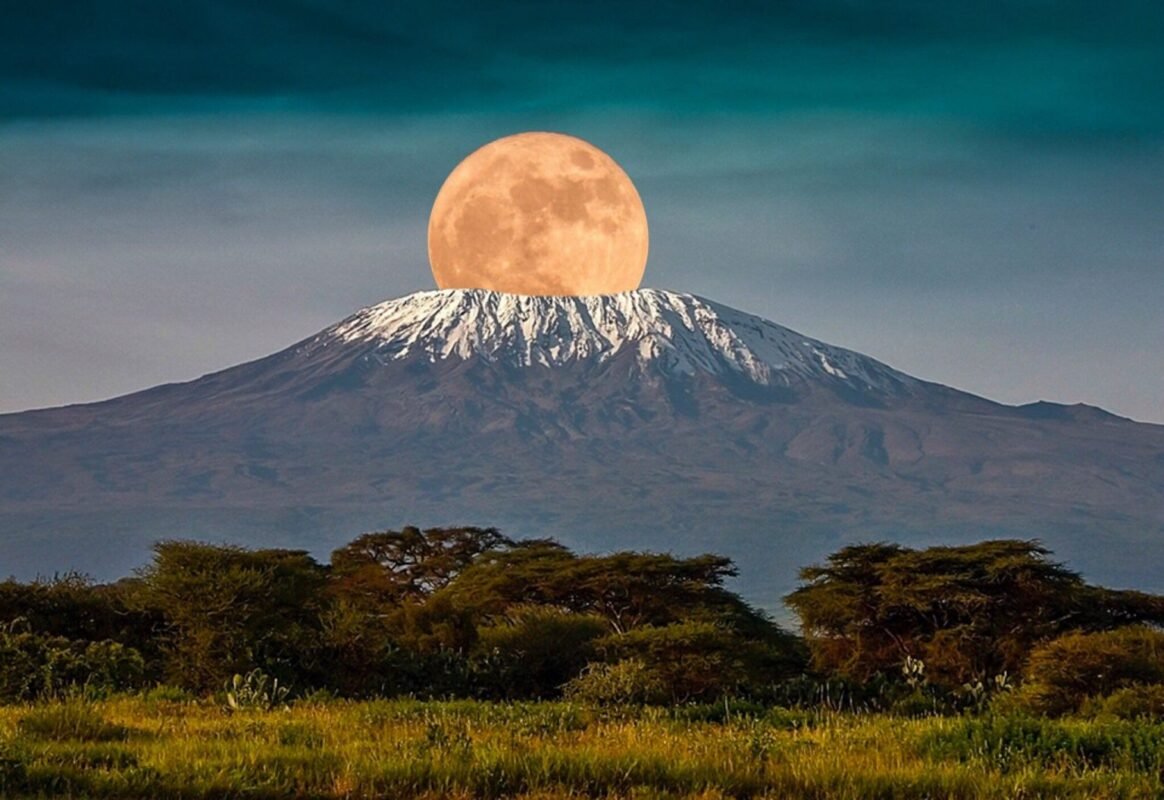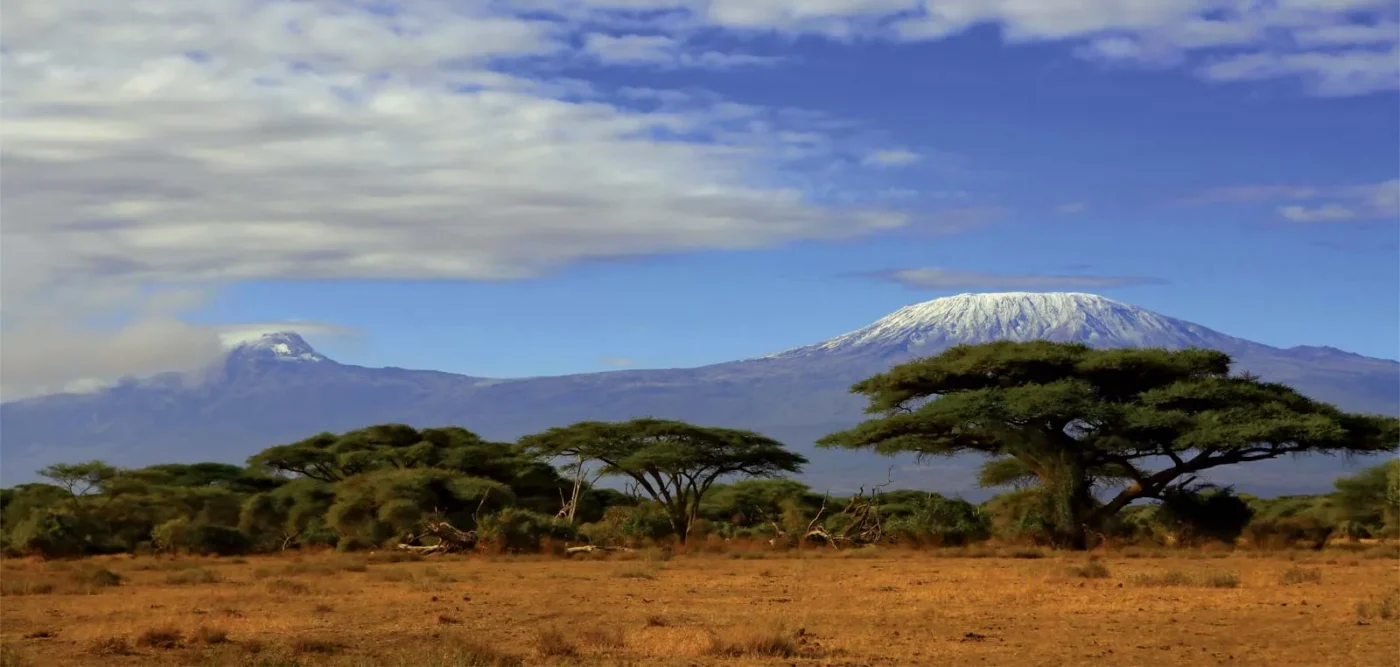Where exactly is Mount Kilimanjaro located? This comprehensive guide will take you through the geographical, ecological, and cultural aspects of this remarkable mountain. The mountain is situated in northeastern Tanzania, close to the border with Kenya.
The climate of Mount Kilimanjaro varies significantly with altitude and location. Understanding these features helps in appreciating the mountain’s grandeur and complexity.
Base and Lower Slopes: The base of Kilimanjaro experiences a tropical climate. Mid-Altitude Zones: As you ascend, temperatures drop, with ranges of 10°C to 20°C. Summit: At the summit, temperatures can plummet to below freezing, with average temperatures around -7°C (19°F to 28°F)
Climbing Mount Kilimanjaro is a bucket-list adventure for many, and understanding the logistics and requirements is essential for a successful trek. Prepararing for a Kilimanjjaro climb requires physical training, acclimatization, and logistical planning.
If you or a family member have been affected by the loss of a loved one, contact The National Suicide Prevention Lifeline at 1-800-273-8255.
The future of Mount Kilimanjaro depends on ongoing conservation efforts, responsible tourism, and global awareness of environmental issues. Addressing these factors is crucial for ensuring the mountain’s continued beauty and significance.
 24
Aug
24
Aug
Mount Kilimanjaro, the towering giant of East Africa, is one of the most iconic and awe-inspiring mountains in the world. Known for its majestic snow-capped peak and its prominence as Africa’s highest mountain, Kilimanjaro has captivated the imaginations of adventurers, nature lovers, and geographers alike. But where exactly is Mount Kilimanjaro located? This comprehensive guide will take you through the geographical, ecological, and cultural aspects of this remarkable mountain.
1. Geographic Location of Mount Kilimanjaro
Mount Kilimanjaro is situated in northeastern Tanzania, close to the border with Kenya. Its strategic location in the East African Rift system contributes to its impressive elevation and geological significance. Here’s a detailed look at its geographic coordinates and surrounding features.
1.1. Latitude and Longitude Coordinates
Mount Kilimanjaro is located at approximately 3.067°S latitude and 37.355°E longitude. Its precise position places it near the equator, which is crucial to its unique climatic and ecological conditions.
1.2. Location Within Tanzania
Kilimanjaro is situated in the Kilimanjaro Region of Tanzania, which is in the northeastern part of the country. The mountain is relatively close to the border with Kenya, with the nearest Kenyan town, Namanga, located about 70 kilometers (43 miles) to the north.
1.3. Proximity to Major Cities
- Arusha: The city of Arusha, which is a major gateway for tourists heading to Kilimanjaro, is approximately 80 kilometers (50 miles) to the west of the mountain. Arusha serves as a hub for safari tours and climbing expeditions.
- Moshi: The town of Moshi is located about 40 kilometers (25 miles) to the southeast of Kilimanjaro. It is another key starting point for treks and offers stunning views of the mountain.
2. Physical Features of Mount Kilimanjaro
Mount Kilimanjaro is renowned for its striking physical features, which include its three volcanic cones, glaciers, and diverse ecosystems. Understanding these features helps in appreciating the mountain’s grandeur and complexity.
2.1. The Three Cones
- Kibo: The highest of Kilimanjaro’s three cones, Kibo reaches an elevation of 5,895 meters (19,341 feet) above sea level. It is the summit of Mount Kilimanjaro and is known for its distinct crater, which holds the main summit, Uhuru Peak.
- Mawenzi: The second-highest cone, Mawenzi stands at 5,149 meters (16,893 feet). It is characterized by its rugged, spire-like appearance and is less accessible than Kibo.
- Shira: The oldest of the three cones, Shira is situated to the west of Kibo and reaches 4,005 meters (13,141 feet). It features a large plateau that is covered with volcanic rock and moorland vegetation.
2.2. The Glaciers and Ice Fields
Mount Kilimanjaro is famous for its glaciers and ice fields, which are located near the summit of Kibo. The glaciers, including the famous Furtwängler Glacier, are remnants of the mountain’s past ice age and provide a stark contrast to the surrounding savannah landscape. However, the glaciers are retreating rapidly due to climate change.
2.3. The Vegetation Zones
Kilimanjaro is known for its distinct vegetation zones, which vary with altitude:
- Cultivated Zone: The lower slopes are characterized by agricultural activity, with crops such as coffee, maize, and bananas being grown.
- Montane Forest: Above the cultivated zone, lush montane forests thrive with a diverse range of flora and fauna.
- Heather and Moorland: Higher up, the vegetation transitions into heath and moorland, featuring hardy plants like giant lobelias and senecios.
- Alpine Desert: The upper slopes and summit area are covered by alpine desert vegetation, with few hardy plants able to survive the harsh conditions.
3. Climatic Conditions on Mount Kilimanjaro
The climate of Mount Kilimanjaro varies significantly with altitude and location, creating a unique microclimate on the mountain. Understanding these climatic conditions is essential for planning treks and appreciating the mountain’s environment.
3.1. Temperature Ranges
- Base and Lower Slopes: The base of Kilimanjaro experiences a tropical climate with temperatures ranging from 20°C to 30°C (68°F to 86°F).
- Mid-Altitude Zones: As you ascend, temperatures drop, with ranges of 10°C to 20°C (50°F to 68°F) in the montane and moorland zones.
- Summit: At the summit, temperatures can plummet to below freezing, with average temperatures around -7°C to -2°C (19°F to 28°F) depending on the time of year and weather conditions.
3.2. Rainfall Patterns
- Rainy Seasons: Kilimanjaro experiences two main rainy seasons: the long rains from March to May and the short rains from November to December. These seasons bring substantial rainfall to the lower slopes and forests.
- Dry Seasons: The dry seasons occur from June to October and from January to February. These periods are generally considered the best times for trekking, as the weather is more stable and less likely to bring heavy rains.
3.3. Weather Challenges
The weather on Kilimanjaro can be unpredictable, with rapid changes in conditions. Climbers should be prepared for extreme weather variations, including sudden rain showers, strong winds, and temperature drops.
4. Historical and Cultural Significance of Mount Kilimanjaro
Mount Kilimanjaro holds a significant place in the cultural and historical context of Tanzania and East Africa. Its impact extends beyond its physical presence, influencing local cultures and historical narratives.
4.1. Indigenous Communities
The Chagga people, indigenous to the Kilimanjaro region, have lived in the shadow of the mountain for centuries. They have a rich cultural heritage that includes traditional farming practices, customs, and myths related to the mountain. The Chagga view Kilimanjaro as a sacred and integral part of their identity.
4.2. Exploration and Climbing History
Mount Kilimanjaro has been a subject of fascination for explorers and mountaineers since the late 19th century. The first recorded ascent was made by Hans Meyer and Ludwig Purtscheller in 1889. Since then, Kilimanjaro has become one of the most popular trekking destinations in the world, attracting climbers from across the globe.
4.3. Influence in Literature and Media
Kilimanjaro has inspired numerous works of literature, film, and media. Ernest Hemingway’s short story “The Snows of Kilimanjaro” is one of the most famous literary references to the mountain, capturing its allure and mystique.
5. Climbing Mount Kilimanjaro: A Practical Guide
Climbing Mount Kilimanjaro is a bucket-list adventure for many, and understanding the logistics and requirements is essential for a successful trek. This section provides practical information for those planning to conquer Africa’s highest peak.
5.1. Climbing Routes
Mount Kilimanjaro offers several climbing routes, each with its own unique characteristics:
- Marangu Route: Also known as the “Coca-Cola” route, it is the most popular and has hut accommodations along the way. It is known for its relatively easier ascent.
- Machame Route: Known as the “Whiskey” route, it offers a more challenging climb with stunning scenery and diverse ecosystems. It is often favored by experienced trekkers.
- Lemosho Route: This route is known for its scenic beauty and less crowded paths. It provides a longer trek with higher chances of acclimatization.
- Rongai Route: Approaching from the north, this route is less frequented and provides a unique perspective of the mountain. It is considered a good option for those seeking a quieter experience.
5.2. Preparation and Training
Preparing for a Kilimanjaro climb requires physical training, acclimatization, and logistical planning:
- Physical Fitness: Climbers should engage in regular aerobic exercise, strength training, and hiking to build endurance and stamina.
- Acclimatization: Proper acclimatization is crucial to prevent altitude sickness. Climbers should allow for sufficient time to adjust to the high altitudes.
- Gear and Equipment: Essential gear includes hiking boots, warm clothing, sleeping bags, and trekking poles. Climbers should also bring personal items such as a first aid kit, headlamp, and water purification tablets.
5.3. Permits and Regulations
To climb Kilimanjaro, trekkers need to obtain permits through the Tanzania National Parks Authority (TANAPA) or a licensed tour operator. Regulations are in place to ensure the safety of climbers and the preservation of the mountain environment.
5.4. Safety and Health Considerations
Climbers should be aware of potential health risks, including altitude sickness and weather-related challenges. It is essential to follow safety guidelines, listen to your body, and seek medical attention if needed.
6. Conservation and Environmental Impact
The preservation of Mount Kilimanjaro and its surrounding environment is critical for maintaining its ecological balance and ensuring the sustainability of tourism. Understanding the conservation issues and efforts is vital for protecting this natural wonder.
6.1. Environmental Challenges
Mount Kilimanjaro faces several environmental challenges, including deforestation, soil erosion, and climate change. The melting of glaciers and the impact of tourism can threaten the mountain’s delicate ecosystems.
6.2. Conservation Initiatives
Various organizations and initiatives are working to address these challenges and promote sustainable tourism:
- Forest Conservation: Efforts to protect the montane forests and reforest areas affected by deforestation.
- Climate Change Research: Studies to monitor the impact of climate change on Kilimanjaro’s glaciers and ecosystems.
- Community Engagement: Programs to involve local communities in conservation efforts and promote sustainable practices.
6.3. Responsible Tourism
Responsible tourism practices are essential for minimizing the impact on Kilimanjaro’s environment. This includes following Leave No Trace principles, respecting local cultures, and supporting eco-friendly tour operators.
7. The Future of Mount Kilimanjaro
The future of Mount Kilimanjaro depends on ongoing conservation efforts, responsible tourism, and global awareness of environmental issues. Addressing these factors is crucial for ensuring the mountain’s continued beauty and significance.
7.1. Importance of Global Awareness
Raising global awareness about the challenges facing Kilimanjaro can lead to increased support for conservation initiatives and sustainable practices. International cooperation is essential for addressing climate change and protecting the mountain’s natural heritage.
7.2. Innovations in Conservation
Technological advancements and innovative solutions are playing a crucial role in conservation efforts. Drones, remote sensing, and data analysis are helping to monitor environmental changes and protect Kilimanjaro’s ecosystems.
7.3. The Role of Local Communities
Local communities will continue to play a vital role in the preservation of Kilimanjaro. Their knowledge, involvement, and stewardship are essential for maintaining the mountain’s ecological balance and cultural significance.
Conclusion
Mount Kilimanjaro, with its majestic presence and diverse landscapes, is a treasure of East Africa and a symbol of natural grandeur. Located in northeastern Tanzania, close to the Kenyan border, Kilimanjaro stands as Africa’s highest peak and a beacon for adventurers and nature enthusiasts from around the world.
Understanding where Mount Kilimanjaro is located, its physical features, climatic conditions, and cultural significance provides a deeper appreciation of this remarkable mountain. Whether you are planning a trek, studying its environmental challenges, or simply marveling at its beauty from afar, Kilimanjaro remains a powerful reminder of the natural wonders our world has to offer.
As we look to the future, the preservation and sustainable management of Mount Kilimanjaro will be crucial for maintaining its splendor and ensuring that it continues to inspire and captivate generations to come. In the end, Mount Kilimanjaro is not just a geographical landmark but a symbol of the enduring beauty and resilience of our planet.


